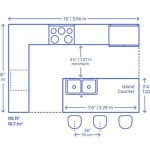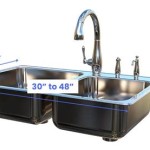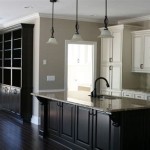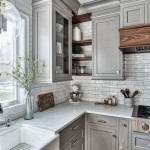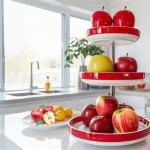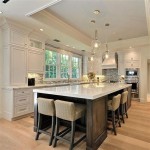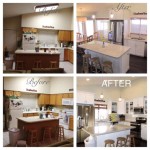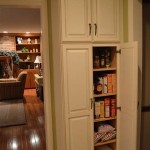Hardwood Floors In The Kitchen: Beauty and Practicality
The debate surrounding hardwood floors in the kitchen is long-standing and complex. While the kitchen is often perceived as a space requiring resilient, water-resistant flooring options, the allure of hardwood, its warmth, and its aesthetic appeal continue to draw homeowners. The decision to install hardwood in a kitchen involves carefully weighing the pros and cons, considering various factors such as lifestyle, maintenance commitment, and the specific type of wood used.
The appeal of hardwood in the kitchen is undeniable. It offers a visual continuity, especially in open-concept homes, seamlessly connecting the kitchen space with adjacent living or dining areas. This creates a harmonious and unified aesthetic, enhancing the overall flow and feel of the home. Beyond aesthetics, hardwood provides a tactile warmth underfoot, a characteristic often lacking in ceramic tile or stone alternatives. Furthermore, hardwood's natural character and grain patterns contribute a unique depth and texture to the kitchen design, making it a focal point of the home.
However, the kitchen environment presents unique challenges for hardwood flooring. The kitchen is susceptible to spills, moisture, and heavy foot traffic, all of which can potentially damage hardwood if not properly addressed. Water damage, in particular, is a significant concern, as it can lead to warping, staining, and even mold growth. Scratches from dropped items, dents from heavy appliances, and wear and tear from constant use can also detract from the beauty and longevity of the floor. Therefore, careful consideration of these challenges is essential before committing to hardwood in the kitchen.
Choosing the Right Type of Hardwood
Selecting the appropriate species of hardwood is crucial for its success in the kitchen environment. Certain types of wood are naturally more durable and water-resistant than others. Harder woods, such as oak, maple, hickory, and Brazilian cherry, are generally better choices for kitchens due to their ability to withstand daily wear and tear. These woods are less prone to dents and scratches compared to softer woods like pine or fir. The Janka hardness scale is a useful tool for comparing the relative hardness of different wood species. A higher Janka rating indicates a harder, more durable wood.
In addition to hardness, the dimensional stability of the wood is also important. Dimensional stability refers to a wood's ability to resist expansion and contraction in response to changes in moisture levels. Woods with good dimensional stability, such as quarter-sawn oak or engineered hardwood, are less likely to warp or cup in a humid kitchen environment. Engineered hardwood consists of multiple layers of wood veneer bonded together, making it more resistant to moisture than solid hardwood. This construction also makes it less prone to expansion and contraction, making it a more stable choice for kitchens.
The finish applied to the hardwood floor also plays a crucial role in its durability and water resistance. A high-quality, durable finish, such as polyurethane or aluminum oxide, will protect the wood from moisture penetration and scratches. Multiple coats of finish are recommended to ensure adequate protection. Opting for a matte or satin finish can also help to conceal scratches and imperfections better than a high-gloss finish. Pre-finished hardwood flooring, which is finished in a factory setting, often offers a more durable and consistent finish than traditional site-finished floors.
Proper Installation and Maintenance
Even with the right type of wood and finish, proper installation is essential for the longevity of hardwood floors in the kitchen. A professional installation will ensure that the subfloor is level and properly prepared, and that the flooring is installed with adequate expansion gaps to accommodate seasonal changes in humidity. A vapor barrier should be installed beneath the hardwood to prevent moisture from rising from the subfloor. Proper acclimation of the hardwood to the kitchen environment before installation is also crucial to prevent warping or cracking after installation.
Maintaining hardwood floors in the kitchen requires a consistent cleaning routine. Spills should be cleaned up immediately to prevent staining and water damage. Regular sweeping or vacuuming will remove dirt and debris that can scratch the finish. Damp mopping with a pH-neutral wood floor cleaner is recommended for routine cleaning. Avoid using excessive water, as this can seep into the seams and damage the wood. Never use abrasive cleaners or scrubbing pads, as these can scratch the finish.
Preventative measures can also help to protect hardwood floors from damage in the kitchen. Placing mats or rugs in high-traffic areas, such as near the sink and stove, can help to prevent wear and tear. Using furniture pads on the legs of chairs and tables will prevent scratches. Keeping pet nails trimmed will also minimize scratching. Consider implementing a "no shoes" policy in the kitchen to reduce the amount of dirt and debris tracked onto the floor. Regular inspections of the floor for signs of damage, such as scratches, dents, or water stains, will allow for prompt repairs and prevent further damage.
Addressing Potential Problems
Despite the best efforts, hardwood floors in the kitchen may still experience problems over time. Scratches and dents are inevitable, especially in high-traffic areas. Minor scratches can often be repaired with a touch-up pen or wax filler stick. Deeper scratches may require sanding and refinishing the affected area. Water damage is a more serious concern and should be addressed immediately. If water has seeped into the seams, it may be necessary to remove and replace the affected boards. Mold growth can occur if water damage is not addressed promptly. It is crucial to identify and eliminate the source of the moisture and treat the affected area with a mold-killing solution.
Warping or cupping of hardwood floors can occur due to excessive moisture or changes in humidity. This can be addressed by controlling the humidity levels in the kitchen. A dehumidifier can be used to reduce humidity, while a humidifier can be used to increase humidity during dry periods. In severe cases of warping or cupping, it may be necessary to replace the affected boards. Gapping between boards can also occur due to changes in humidity. This is generally less of a concern, but it can be minimized by maintaining consistent humidity levels in the kitchen. Filling the gaps with wood filler can improve the appearance of the floor, but this is only a temporary solution.
Preventing problems is always better than treating them. By taking proactive steps to protect and maintain hardwood floors in the kitchen, homeowners can extend their lifespan and enjoy their beauty for many years. Regular cleaning, preventative measures, and prompt repairs will help to keep the floors in good condition and prevent serious damage. When properly cared for, hardwood floors can be a stunning and durable addition to any kitchen.

Hot Flooring For Kitchens Is Wood But What About Water The Seattle Times

Pros Cons Of Hardwood Floors In A Portland Kitchen

The Pros And Cons Of Installing Hardwood Flooring In Your Kitchen

Top Reasons To Choose Hardwood Floors In Kitchen Designs

Best Wood Floors In Kitchen Smart Remodeling Llc

What Is The Best Hardwood Flooring For Kitchens And Why Impressions Collection

Is It Possible To Have Hardwood Floors In A Kitchen Copperstone Kitchens Renovation

How To Choose Wood Flooring For A Kitchen Mi Hardwood Services Cameron The Sandman Contractor

Hardwood Floors In Kitchens

Choosing The Ideal Kitchen Flooring Mulveys Wood Floors Doors

